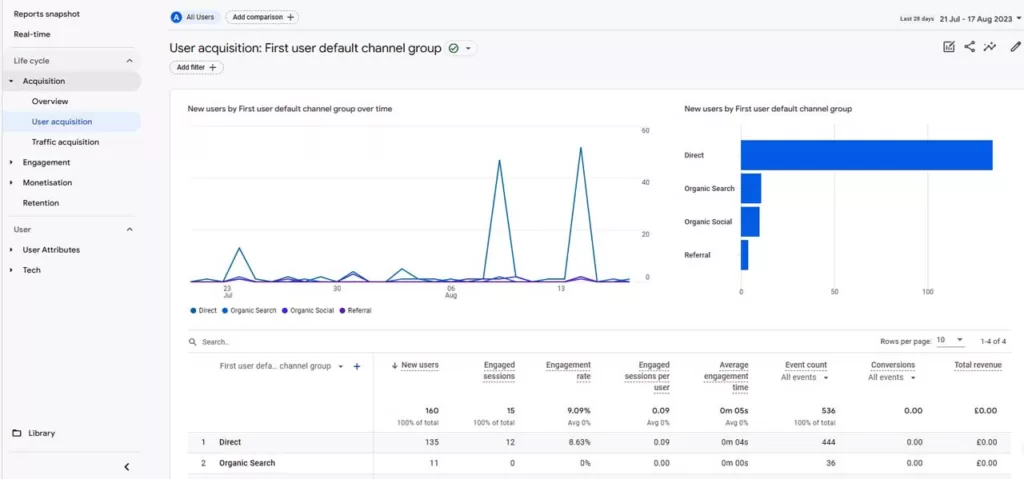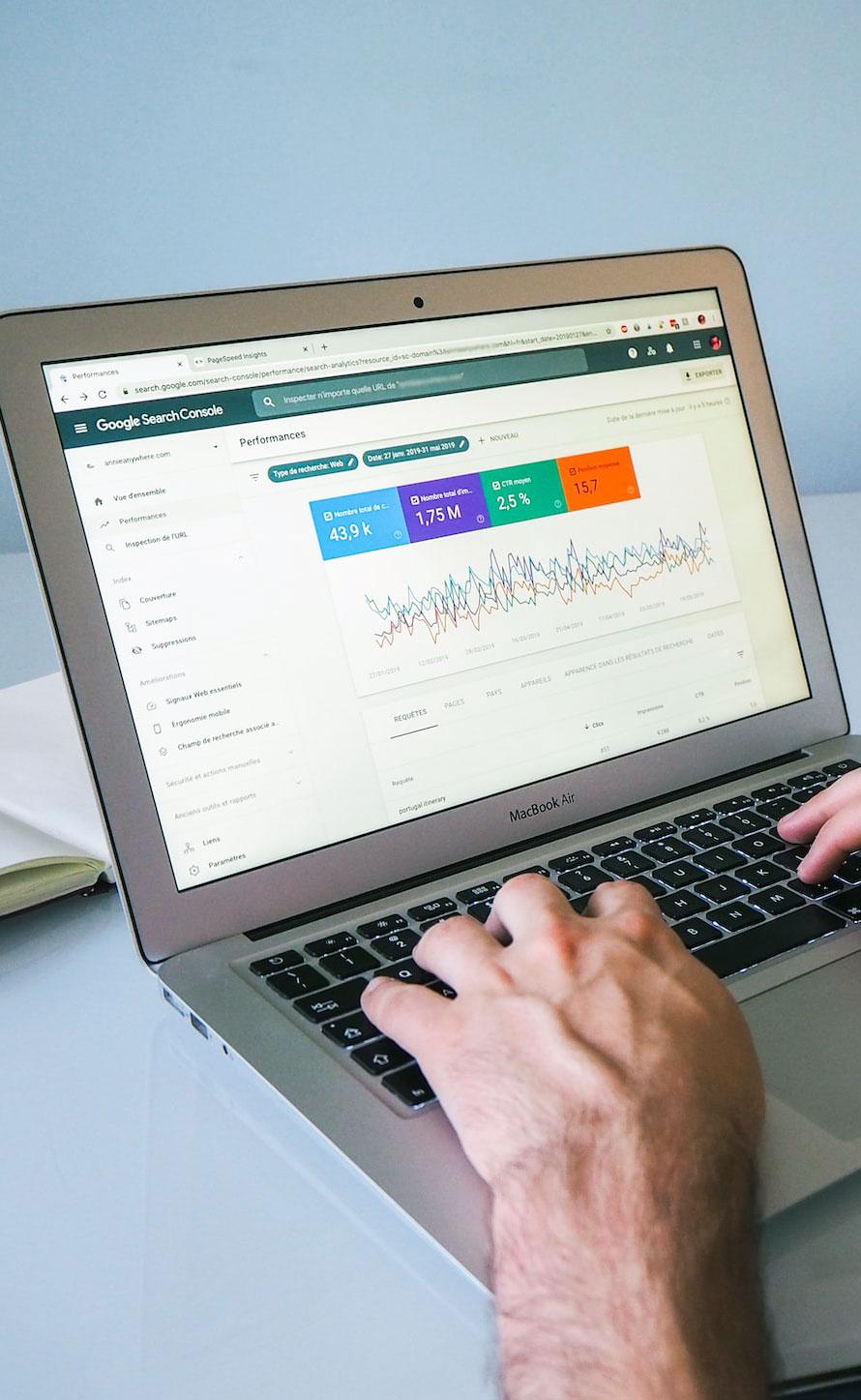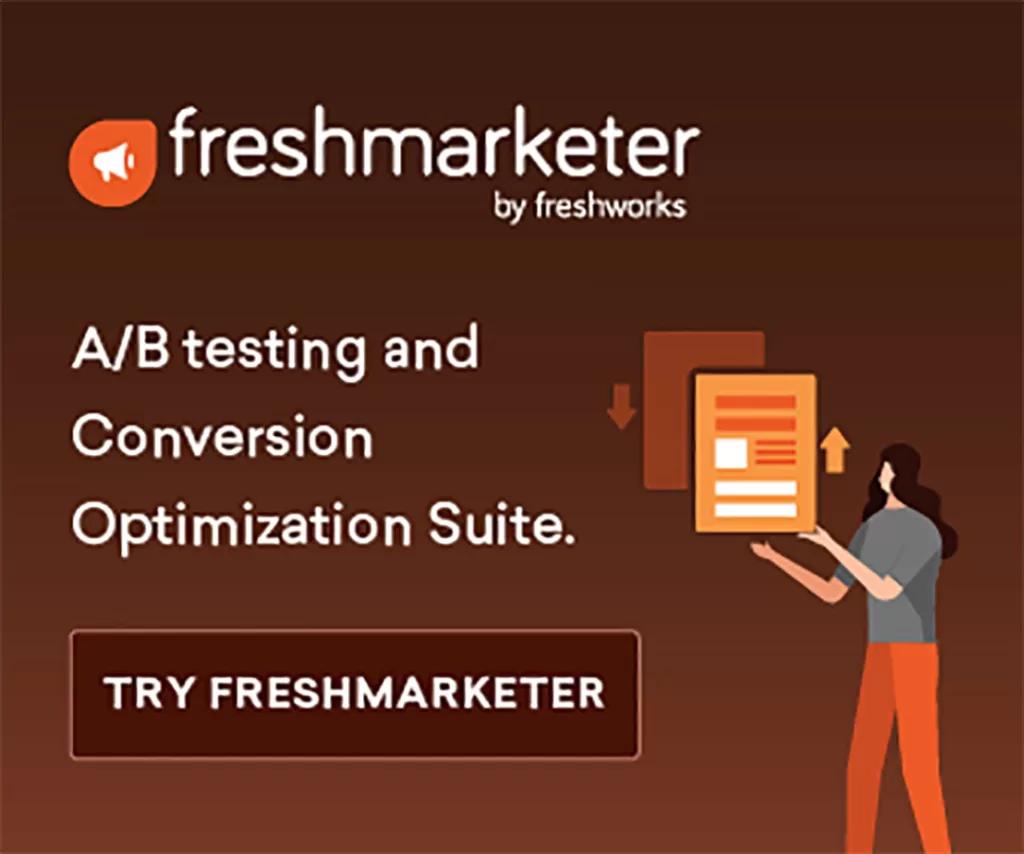Google defines Direct Traffic as “a session is processed as direct traffic when no information about the referral source is available, or when the referring source or search term has been configured to be ignored.” This is true for both Google Analytics and the new GA4.
Any traffic which doesn’t have a set or defined traffic source will end up in Google Analytics as direct traffic, which is far from ideal when we rely so heavily on our data accuracy. So, let’s see what is considered direct traffic and the possible causes.
What is Considered Direct Traffic?
a. Manually typing URL/Bookmarking
Direct traffic can come from the user directly typing the URL into their browser, or from their saved bookmarks because they have no affiliated source attributed to them.
However, these days, there are fewer instances of manual URL typing traffic due to the way we consume content and the increased use of social media and messenger platforms.
b. Bot traffic
This example is one of most common sources of direct traffic for many sites. The easiest way to identify any sessions coming from bot or non-human activity is to look at bounce rate (in most cases it is 100%) and the average session duration (less then 3 seconds).
At the Google Analytics View level, there is a designated field – ‘Exclude all hits from known bots and spiders’ this should be ticked off when creating a new view to avoid bot traffic being measured.
c. Clicked on a link from a HTTPS to HTTP page
HTTPS is a standard in today’s landscape however, this wasn’t the case several years ago when the majority of sites were using the HTTP protocol. When Google established the new standards of web security, naturally everyone started migrating to HTTPS.
Google Analytics translates this as getting more direct traffic. The reason being, that when HTTPS refers a session to HTTP with no referring data logs, GA tracks that session as direct traffic.
d. Redirect Issues
If a URL is not redirected correctly Google cannot identify where the original traffic source came from. The best practice for a redirect instruction is to use a 3xx status where we guide the user from an old page to the new, correct page.
However, sometimes this is not possible and Javascript/Meta redirects are used. This is not ideal and in most cases will influence the direct traffic recorded in Google Analytics.
Additionally, we are sometimes also forced to use a “server-side” redirect instruction. This type of redirect can also result in increases in direct traffic; this is often a result of UTM parameters getting lost in the process.
A solution might be manually adding UTM parameters, for example: https://example1.com/?utm_source=google&utm_medium=organic&utom_campaign=redirect (server-side redirects to) https://example2.com.
e. Click on a non-web document
This includes PDFs and Microsoft Word, Excel, PowerPoint…This is similar to the server-side redirect scenario. Using UTM parameters to tag any traffic coming from your documents embedded links will resolve this.
f. Shortened URLs
With the popularity of social media, more and more businesses are using shortened URLs in their profile descriptions to point to their products and website. In most cases, when a short URL is used (Bitly is a service which offers shortened URLs) a redirect process is employed.
f. Missing GA/GTM tag
Sometimes, our Google Analytics/Google Tag Manager snipped is missing from some page templates – this isn’t as common, but worth mentioning. For example, if we have created a new page but the CMS is using a different template from the default one, it ends up not including the hardcoded GA or GTM code.
So, a user hit wouldn’t fire on the GA code because there’s nothing to be triggered. But, if after visiting the new page, the user decides to navigate to a different page, which has a GA snippet on it; at this point, we have no referring logs therefore the latest sessions will be grouped as direct traffic.
Why is my Direct Traffic so High?
Direct traffic can have multiple sources and if we see a significant increase in the data it needs to be investigated. You should start by reviewing the tagging process and ensure the tracking is set up correctly.
Analyse each of the above points of the possible causes for direct traffic should lead you finding the route of the issue and you’ll be on your way to solving an increase in direct traffic in no time.

How to Analyse it in Google Analytics?
While there are many reasons for direct traffic, it is important to monitor your average direct traffic monthly to identify any spikes and increases. Familiarise yourself with GA and GA4 and where you can monitor direct traffic.
Now that Universal Google Analytics is deprecated, we have only GA4. Within Google Analytics interface, direct traffic can be found under Reports>Acquisition in both User Acquisition and Traffic Acquisition, depending on the information you are seeking.
How to Reduce Your Direct Traffic Numbers?
Direct traffic is unavoidable. And in all honesty, it’s not necessarily a bad thing. This type of traffic can indicate that people are aware of your website and are intentionally seeking it out.
As a general guideline, you should observe the proportions of your traffic channels. Normally, direct is constituting around 5% to 20% within your Google Analytics data.
Anymore than that, then it’s likely something isn’t adding up. If that’s the case, you can use the steps below to reduce your direct traffic and get better insights into what marketing efforts are working.
Here are a couple of approaches to minimize direct traffic:
- Implement UTM parameters
- Set up first party attribution tracking
- Migrate to HTTPs
- Avoid vanity URLs
- Check your Google Analytics code
- Block internal traffic
If you encounter any challenges or have suggestions to enhance this guide, please don’t hesitate to reach out to us. We eagerly welcome your input as it’s the swiftest route to our self-improvement and providing you with top-tier advice. By assisting us, you allow us to assist you better.







